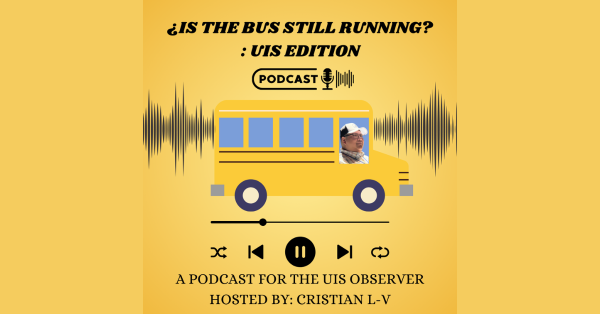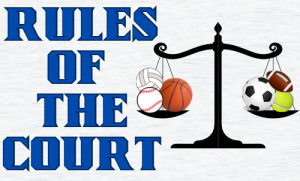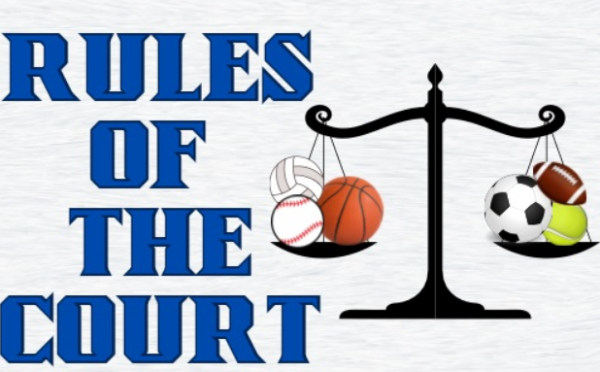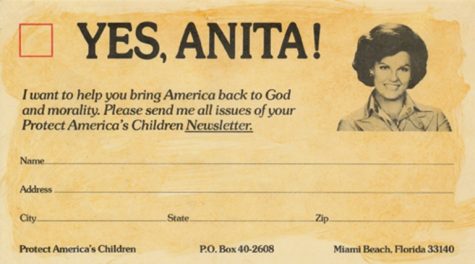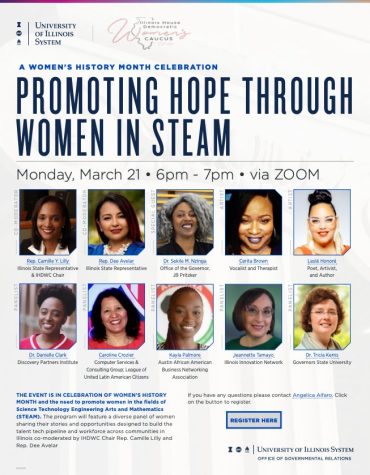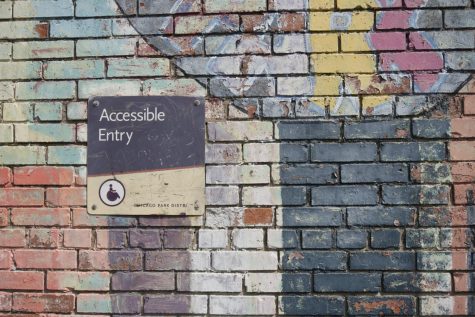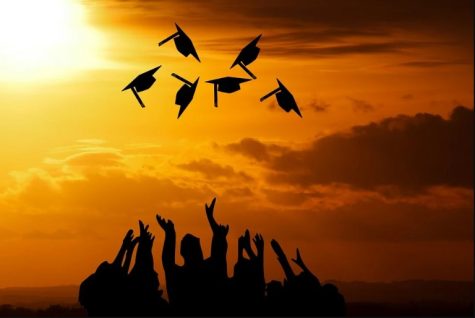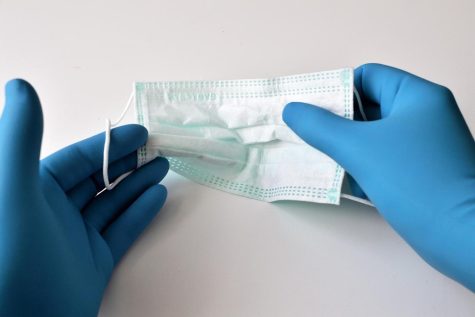Bumble Brain Ep. 1 WHM Queer Women in Media
[00:00:00] Camille: Hello all, and welcome to the first episode of the Bumble brain podcast here to buzz through whatever it is or should be on your mind. And bee-lieve me, I will probably never run out of bee puns. My name is Camille. I’m an individual psychology major studying at the University of Illinois at Springfield and working for the observer newspaper UIS to share information and perspective on psychology, politics, criminal justice, and more.
[00:00:44] What we’ll do here at Bumble brain is explore a wide range of topics from small thoughts that can buzz through your mind to bigger topics we can break down and find solutions to. At best I can offer ways we can better navigate the world a little bit differently one step at a [00:01:00] time. And at the very least, there’s a chance to hear interesting topics that may have bumbled through your brain, too.
[00:01:05] Since this month is women’s history month, I’d like to take the opportunity before it ends to address a very valuable topic to me being the representation of queer women and me. So, how is Queer representation right now? Well, we can actually take a pretty good look at this through the Gay Lesbian Alliance against Defamation, or GLAAD for short, and their ninth annual studio responsibility index, which tracks the quantity, quality, and diversity of queer characters shown in film and major studios.
[00:01:34] The number of queer characters found in major releases was 20 in 2020, ironically enough. But that number unfortunately is a drop from the 50 queer characters scene in 2019 releases. Despite this, the majority of the characters seen in 2020 were, in fact, female and those 11 queer female characters highlight the first point where we have had less queer male characters than female. Now nobody’s really winning when the numbers are still [00:02:00] abominably low, but it’s a step in the right direction regardless if we can just lift those numbers in the future.
[00:02:14] Personally, the times I’ve seen the best queer women representation in media has been through music. I listened to songs such as “Girls” by Vetta Borne, “Girls don’t cry” by Maribel and young Franco, “bisexual Anthem” by Domo Wilson, and I’m sure there’s more that I’m missing even. Now, notice I said ones that are representation of queer women, rather than just… portrayal simply as it is. I focus on the songs that really highlight the emotional experience and the real-life experience of being a queer woman, rather than just the idea of it.
[00:02:44] When it comes to movies, I haven’t personally seen a great deal of queer women representation, which is understandable considering the low overall number found by GLAAD, but of the ones I’ve seen where I believe they weren’t very outright with it. I would list wonder woman from [00:03:00] 2020 as one of those.
[00:03:02] So then what’s missing from media if we’re not getting good enough queer women representation? Unfortunately, even despite the positives, the occurrences of queer women being present in media has often tended to be more of a presence than a representation of infrequent. That media captures the accurate portrayals of budding romances between women, the experiences of trans women, the journey for a woman exploring her asexuality, and more. Instead, there tend to be these issues with the way these are filtered through what’s known as the ‘male gaze’.
[00:03:36] Now this term was first used by Laura Mulvey in her essay titled the “visual pleasure and narrative cinema” and is used to describe the lens where media views women from a masculine and often heteronormative perspective. And as a result, portrays women as sexual objects for the pleasure of the heterosexual man. This hyper-sexualization can be a huge barrier for queer women, as it leads to [00:04:00] many taking their sexuality, or lack thereof in the case for some in the ace community, less seriously. It also has a strong, detrimental factor making the woman in these instances seem less human, [and] distorts what human responses women would have to things like abuse, emotional pain, hardship, and success.
[00:04:18] One of my least favorite examples of this was with suicide squad where Harley Quinn became so straight washed, bet you’ve never heard that term before, that you’d almost have no idea she was a queer woman at all and had entered into a romantic relationship with Poison Ivy. The priority of confirming her straight identity came at the cost of leaving her with an abusive relationship with the joker. If we’re even remotely close to a point where a woman being in an abusive relationship is more appealing than putting her with a woman? [Then] we’re not at a very good point, I would say. And that’s of course paired with the fact that there’s not a lot of representation at all. So this is pretty much what little we have been taken and erased.
[00:05:04] Now, to further talk about the male gaze with this what’s been noticed through media is that there is, again, a priority of making women seem more straight, or if not straight more sexy. There is emphasis on the sex scenes is emphasis on kissing and, and baby talk, and things that can be present in queer women relationships, and there’s nothing wrong with those things being present. But when this is all you’re seeing about queer women in relationships and queer women experiencing romantic interactions, platonic interactions, and otherwise there starts to be this narrative that queer women are inherently sexual beings meant to satisfy the male perspective.
[00:05:49] And when they don’t, then a term known as ‘hostile sexism’ comes into play where because they reject the sexual role they’ve been essentially given, [00:06:00] they are then viewed less favorably and maybe even hatefully at times. The [perceived] importance of sexualizing women has become so strong that I think this is one of the biggest reasons that it’s hard for queer women to exist in the narrative we still have right now.
[00:06:18] There’s still this issue of pleasure being prioritized above accurate portrayals and representation. And this really effectively suffocates the real experiences that Queer Women to go through. It also can, unfortunately, have a boomerang effect where queer women then view themselves through this male gaze and treat themselves and fellow Women as mere sex objects, or look down on them when they start to portray more human emotions and human qualities.
[00:06:52] This is incredibly dangerous for not only those individuals but then also just our general understanding [00:07:00] of women in the LGBTQ+ community. So, with one of the bigger issues being accuracy, the next question then remains, what can we do to make a change? Now, this really is the hard part. What can I do to make a difference? You hear it asked all the time and it never gets any easier to answer. Really.
[00:07:22] Especially on a student level, since as college students, we’re often a little more detached from some of the larger issues than we deserve to be. You’ll probably hear your peers talking about how they’re not really into politics, or they don’t want to get into some of the deep stuff because it just maybe gives them bad vibes.
[00:07:40] But the reality is of all the people that could do something about these issues, we really are the ones to do it. It’s our generation that has to bear witness to these things. It’s our generation that will experience the effects of some of these things. I’m sure some of us have even seen it in our own relationships how things like the male gaze have come into factor with both women and men. So regardless of the classes that get in the way or the midterms or tuition, believe me, I get it, let’s consider some of the small to medium scale ways. You can make a. Without fear of budgetary concerns or not having a media presence. One meaningful small-scale way is by making it a point to consume more of the media that you enjoy that represents queer women appropriately, by taking a look at lists of best movies on queer women of color, such as one done by screen rant that I’ll link in the description, you can get a chance to delve into movies that are doing the queer women representation thing right. Just make sure to leave a review on these movies and encourage others to take a look as well. Another way you can do this is, believe it or not, just by talking about it. By opening this discussion more frequently with your friends, your family, your coworkers, it gives this topic a chance to be aired out in public [00:09:00] and more prominently discussed. That way, there’s hope for things possibly changing just by the sway of public opinion.
[00:09:08] Now, for those that may be, do have the platform room or ability to it also helps to do things like writing articles on these topics; speaking on these things in media form can contribute to the change of how these things are presented overall.
[00:09:26] Again, the burden of responsibility for representing marginalized communities falls on the younger generations as we’re the ones that have progressed to see the changes that need to be made. This has been the case time and time again, when it comes to representing marginalized communities and it’s necessary yet again when it comes to representing queer women in the media.
[00:09:48] For more information, feel free to stop by The Gender and Sexuality Student services center if you go to UIS, it’s in the student life building room 22. Dre, Duvendack is the program coordinator there, and she is absolutely amazing at [00:10:00] helping students get involved with LGBTQ plus topics and allyship. Alongside that feel free to ask the rest of the staff, including myself, over at GSSS for ideas and help with learning to become a better ally to queer women as a whole. Thank you so much for listening today and don’t forget to stay busy-minded.



